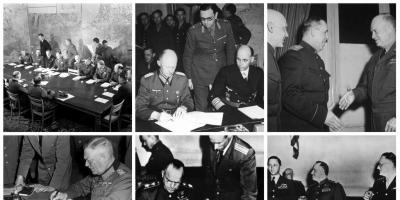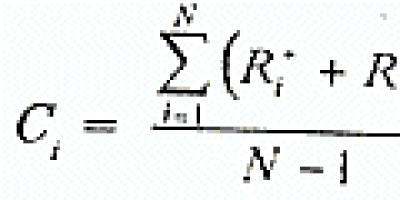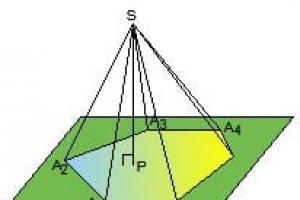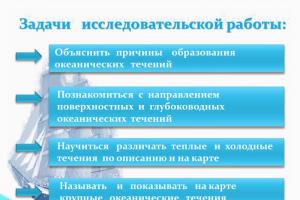Exactly 70 years ago, on May 8, 1945, in the Berlin suburb of Karlshorst at 22:43 Central European time (May 9 at 00:43 Moscow time), the final Act of unconditional surrender of Nazi Germany was signed.
A selection of photographs dedicated to this significant event.

1. The building of the German military engineering school in the suburbs of Berlin - Karlshorst, in which the signing ceremony of the Act of Unconditional Surrender of Germany was held.

2. Representatives of Germany at the table during the signing of the Act of Unconditional Surrender. Seated in the photo from left to right: Colonel General Stumpf from the Air Force, Field Marshal Keitel from the Army and Admiral General von Friedeburg from the Navy. 05/08/1945

3. American General Dwight Eisenhower and British Air Marshal Arthur Tedder at a press conference after signing the German surrender in Reims (France) on May 7, 1945.

4. Representatives of the Allied command after the signing of the German surrender in Reims (France) on May 7, 1945.
In the photo from left to right: Chief of the USSR military mission in France, Major General Ivan Alekseevich Susloparov (1897-1974), Chief of Staff of the Allied forces in Europe, British Lieutenant General Sir Frederick Morgan Morgan, 1894-1967), American Lieutenant General Bedell Smith, American radio commentator Harry Butcher, American General Dwight Eisenhower, British Air Marshal Arthur Tedder and Chief of the British Navy Staff Admiral Sir Harold Burrough.

5. Colonel General Alfred Jodl (center) signs the German surrender at the Allied headquarters in Reims at 02.41 local time on May 7, 1945. Seated next to Jodl are Grand Admiral Hans Georg von Friedeburg (right) and Jodl's adjutant, Major Wilhelm Oxenius.
The leadership of the USSR was dissatisfied with the signing of the German surrender in Reims, which was not agreed upon with the USSR and relegated the country that made the greatest contribution to the Victory to the background. At the suggestion of the Soviet government and personally I.V. Stalin and his allies agreed to consider the procedure in Reims a preliminary surrender. The Allies also agreed that the matter should not be postponed, and scheduled the signing of the Act of Surrender of Germany in its entirety in Berlin for May 8, 1945.
6. Signing of the German surrender in Reims on May 7, 1945. In the photo, back from right to left: A. Jodl's adjutant Major Wilhelm Oxenius, Colonel General Alfred Jodl and Grand Admiral Hans Georg von Friedeburg; facing from left to right: Chief of Staff of Allied Forces in Europe British Lieutenant General Sir Frederick Morgan, French General Francois Sevet, Chief of Staff of the British Navy Admiral Sir Harold Burro, radio commentator Harry Butcher American Lieutenant General Bedell Smith, Adjutant I.A. Susloparov, Senior Lieutenant Ivan Chernyaev, Head of the USSR Military Mission in France, Major General Ivan Alekseevich Susloparov (1897-1974), American General Carl Spaatz, cameraman Henry Bull, Colonel Ivan Zenkovich.

7. Colonel General Alfred Jodl (center) signs the German surrender at the headquarters of the Allied forces in Reims at 02.41 local time on May 7, 1945.

8. Representatives of the German command approach the table to sign the surrender in Reims on May 7, 1945. In the photo from left to right: A. Jodl's adjutant Major Wilhelm Oxenius, Colonel General Alfred Jodl and Grand Admiral Hans Georg von Friedeburg.

9. The head of the USSR military mission in France, Major General Ivan Alekseevich Susloparov (1897-1974), shakes hands with the commander of the Allied forces in Europe, American General Dwight Eisenhower, at the signing of the act of German surrender in Reims on May 7, 1945. To the left of I.A. Susloparov is his adjutant, senior lieutenant Ivan Chernyaev.

10. The Allied Chief of Staff in Europe, American Lieutenant General Bedell Smith, signs the act of surrender of Germany in Reims on May 7, 1945. In the photo on the left is the chief of staff of the British fleet, Admiral Sir Harold Burro, on the right is the head of the USSR military mission in France, Major General Ivan Alekseevich Susloparov (1897-1974).

11. The head of the USSR military mission in France, Major General Ivan Alekseevich Susloparov (1897-1974), signs the act of surrender of Germany in Reims on May 7, 1945. In the photo on the far right is American General Carl Spaatz. To the left of I.A. Susloparov is his adjutant, senior lieutenant Ivan Chernyaev.

12. Wehrmacht artillery general Helmut Weidling emerges from a bunker during the surrender of the Berlin garrison. 05/02/1945

13. Representative of the Supreme High Command of the Red Army, commander of the 1st Belorussian Front, Marshal of the Soviet Union Georgy Konstantinovich Zhukov, who signed the Act of Surrender on the part of the USSR. In the background is a Soviet cameraman filming the signing ceremony. Berlin. 09/08/1945




17. Representatives after signing the Act of Unconditional Surrender in Berlin-Karlshorst on May 8, 1945. The act on the part of Germany was signed by Field Marshal Keitel (in front on the right, with a marshal's baton) from the ground forces, Admiral General von Friedeburg (on the right behind Keitel) from the navy and Colonel General Stumpf (to the left of Keitel) from the military -but-air force.

18. Field Marshal Wilhelm Keitel, signing the Act of Unconditional Surrender of Germany on the German side, is presented with the text of the Act. To the left, second from the viewer, G.K. is sitting at the table. Zhukov, who signed the Act on behalf of the USSR. Berlin. 05/08/1945

19. Chief of the General Staff of the German Ground Forces, Infantry General Krebs (left), who arrived on May 1 at the location of Soviet troops in order to involve the High Command in the negotiation process. On the same day, the general shot himself. Berlin. 05/01/1945

20. The Soviet delegation before signing the Act of Unconditional Surrender of all German Armed Forces. Berlin. 05/08/1945 Standing on the right is the representative of the Supreme High Command of the Red Army, commander of the 1st Belorussian Front, Marshal of the Soviet Union G.K. Zhukov, standing in the center with his hand raised - Deputy Commander of the 1st Belorussian Front, Army General V.D. Sokolovsky.

21. Field Marshal Wilhelm Keitel, signing the Act of Unconditional Surrender of Germany on the German side, is presented with the text of the Act. On the left at the table sits G.K. Zhukov, who signed the Act on behalf of the USSR. Berlin. 05/08/1945

22. Representatives of the German command, led by Field Marshal Keitel, are sent to sign the Act of Unconditional Surrender of Germany. May 8, Berlin, Karlhorst.

23. Chief of the General Staff of the German Ground Forces, Infantry Lieutenant General Hans Krebs, at the headquarters of the Soviet troops in Berlin. On May 1, Krebs arrived at the location of Soviet troops with the aim of involving the High Command in the negotiation process. On the same day, the general shot himself.

24. German surrender on the Frisch-Nerung spit, East Prussia. German and Soviet officers discuss the terms of surrender and the procedure for surrendering German troops. 05/09/1945

25. German surrender on the Frisch-Nerung spit, East Prussia. German and Soviet officers discuss the terms of surrender and the procedure for surrendering German troops. 05/09/1945

26. German surrender on the Frisch-Nerung spit, East Prussia. German officers accept the terms of surrender and the procedure for surrender from the Soviet officer. 05/09/1945

27. German surrender on the Frisch-Nerung spit, East Prussia. German officers accept the terms of surrender and the procedure for surrender from the Soviet officer. 05/09/1945

28. German surrender on the Frisch-Nerung spit, East Prussia. German and Soviet officers discuss the terms of surrender and the procedure for surrendering German troops. 05/09/1945

29. German surrender on the Frisch-Nerung Spit, East Prussia.

30. Field Marshal Wilhelm Keitel signs the Act of Unconditional Surrender of Germany. Berlin, May 8, 1945, 22:43 Central European time (May 9 at 0:43 Moscow time).

31. Field Marshal Wilhelm Keitel goes to the signing of the Act of Unconditional Surrender of Germany. Berlin. 05/08/1945

32. Arrival in Berlin for the signing ceremony of the Act of Surrender of Germany by the Air Chief MarshalGreat Britain Tedder A.V. Among those greeting: Army General V.D. Sokolovsky. and Commandant of BerlinColonel General Berzarin N.E. 05/08/1945

33. Arrival in Berlin of Field Marshal W. Keitel, Fleet Admiral H. Friedeburg and Air Force Colonel General G. Stumpf to sign the Act of Unconditional Surrender of Germany. Among the accompanying persons is Army General V.D. Sokolovsky. and Colonel General Berzarin N.E. 05/08/1945

34. First Deputy People's Commissar for Foreign Affairs of the USSR Vyshinsky A.Ya. AndMarshal of the Soviet Union Zhukov G.K. heading to the signing ceremonyAct of unconditional surrender of Germany. Karlshorst. 05/08/1945

35. Chief Air Marshal of Great Britain Sir Tedder A. and Marshal of the Soviet Union Zhukov G.K. looking through documents on the conditions of Germany's surrender.

36. Signing by Field Marshal V. Keitel of the Act of Unconditional Surrender of all German Armed Forces. Berlin. Karlshorst. 05/08/1945

37. Commander of the 1st Belorussian Front, Marshal of the Soviet Union G.K. Zhukov.signs the Act of unconditional surrender of all German armed forces.

38. Lunch in honor of the Victory after signing the terms of Germany’s unconditional surrender. From left to right: British Air Chief Marshal Sir Tedder A., Marshal of the Soviet Union G. K. Zhukov, Commander of the US Strategic Air Forces General Spaats K. Berlin. 08-09.05.1945

_________________________________
The photo selection is based on the following materials:
Russian State Archive of Film and Photo Documents.
All photos are clickable.
Photo albums "The Great Patriotic War"
Photos from open sources
In 1945, on May 8, in Karshorst (a suburb of Berlin) at 22.43 Central European time, the final Act of unconditional surrender of Nazi Germany and its armed forces was signed. This act is called final for a reason, since it was not the first.
From the moment the Soviet troops closed the ring around Berlin, the German military leadership faced the historical question of preserving Germany as such. For obvious reasons, German generals wanted to capitulate to the Anglo-American troops, continuing the war with the USSR.
To sign the surrender to the allies, the German command sent a special group and on the night of May 7 in the city of Reims (France) a preliminary act of surrender of Germany was signed. This document stipulated the possibility of continuing the war against the Soviet army.
However, the unconditional condition of the Soviet Union remained the demand for the unconditional surrender of Germany as a fundamental condition for the complete cessation of hostilities. The Soviet leadership considered the signing of the act in Reims to be only an interim document, and was also convinced that the act of surrender of Germany should be signed in the capital of the aggressor country.
At the insistence of the Soviet leadership, generals and Stalin personally, representatives of the Allies met again in Berlin and on May 8, 1945 signed another act of surrender of Germany together with the main winner - the USSR. That is why the Act of Unconditional Surrender of Germany is called final.
The ceremony of solemn signing of the act was organized in the building of the Berlin Military Engineering School and was chaired by Marshal Zhukov. The final Act of Unconditional Surrender of Germany and its armed forces bears the signatures of Field Marshal W. Keitel, Commander-in-Chief of the German Navy Admiral Von Friedeburg, and Colonel General of Aviation G. Stumpf. On the Allied side, the Act was signed by G.K. Zhukov and British Marshal A. Tedder.
After the signing of the Act, the German government was dissolved, and the defeated German troops completely laid down their arms. Between May 9 and May 17, Soviet troops captured about 1.5 million German soldiers and officers, as well as 101 generals. The Great Patriotic War ended with the complete victory of the Soviet army and its people.
In the USSR, the signing of the final Act of Unconditional Surrender of Germany was announced when it was already May 9, 1945 in Moscow. By decree of the Presidium of the Supreme Soviet of the USSR, in commemoration of the victorious completion of the Great Patriotic War of the Soviet people against the Nazi invaders, May 9 was declared Victory Day.
On May 7, Nazi Germany made a last attempt to save itself from complete defeat by concluding a separate peace with the allies of the USSR, but they failed.
The commanders of the Allied armies insisted on complete and unconditional surrender with the participation of the USSR
From May 2 to 4, a meeting of the top military leadership of the Third Reich was held at Doenitz headquarters.
It was attended by Admiral Doenitz, Field Marshal Keitel, Colonel General Jodl, Field Marshals Scherner, Ritter von Greim and other senior ranks of the German army. The question was about capitulation to the allied Anglo-American forces and about further resistance to the Red Army.
The issue of concluding an anti-Bolshevik alliance with the Americans and British was especially hotly discussed. The death of Hitler, as it seemed to the new German leaders, had destroyed the last obstacle to this.
German leaders felt that with the death of the Fuhrer, the West would view Germany and its army as a support in the fight against Bolshevism in Europe.
This is why Admiral Karl Doenitz, who succeeded Hitler, tried to split East and West and save what was left of Germany through a partial surrender to the Western Allies only. However, when receiving proposals from the German government of Doenitz to conclude an alliance, US President Harry Truman replied that the only acceptable thing was unconditional surrender to the entire Big Three states - the USA, Great Britain and the USSR.
British Prime Minister Winston Churchill supported him. The Supreme Allied Commander in Europe, General Eisenhower, also fully agreed with Truman's policies.
Meanwhile, the German leadership tried to shake the consensus of the Allies with proposals for a separate peace and continuation of hostilities. German soldiers on the Eastern Front, rightly fearing capture and revenge from the Red Army, fought desperately.
On the Western Front, they surrendered as soon as they saw their allies. The civilian population fled to the West to end up in the Anglo-American zone after the end of the war. On May 1, Admiral Dönitz, in a radio address to the German nation, said that the Wehrmacht would “fight against Bolshevism as long as German troops and hundreds of thousands of families remain in the eastern part of Germany.”
But on May 5, he realized that Eisenhower would not accept surrender to just the Western Allies, so he tried to achieve his goal by surrendering German divisions and armies in the West and continuing to fight in the East. On May 4, Doenitz sent his representative, Admiral Hans von Friedeburg, to the Supreme Headquarters of the Allied Expeditionary Force (HAEF) in Reims with the task of negotiating the surrender of the remaining German troops in the West.
Eisenhower continued to insist that total surrender must take place simultaneously on the Eastern and Western Fronts. Chief of Staff General Smith and General Strong, who before the war served as a military attaché in Berlin and spoke excellent German, had a conversation with von Friedeburg.
Eisenhower refused to meet with German officers until the document of complete and unconditional surrender was signed. General Smith told von Friedeburg that negotiations were not forthcoming and invited him to sign a document of complete surrender.
Friedeburg replied that he did not have the authority to do this.
General Smith in turn showed Friedeburg some operational headquarters maps, which clearly showed the overwhelming superiority of the Allied forces and the hopelessness of the position of the German forces. Admiral von Friedeburg urgently telegraphed Doenitz, asking him for permission to sign the unconditional surrender.

Alfred Jodl
However, the head of the German government did not give such permission. Instead, he made a last-ditch attempt to split the three-power alliance by sending Colonel General Alfred Jodl, chief of operations at the German army headquarters, to Reims. Yodel arrived there on May 6, a Sunday evening.
He again negotiated with Generals Smith and Strong, emphasizing that the Germans were ready and willing to capitulate to the West, but not to the Red Army. Jodl openly declared his intention to “preserve as many Germans as possible for the German nation and save them from Bolshevism.”
Moreover, he said that nothing could force the troops of Generals Lehr and Rendulic, Field Marshal Scherner to carry out the order for complete and unconditional surrender, as long as they had the opportunity to withdraw to areas occupied by American and British troops. In other words, Colonel General Jodl refused to capitulate German troops in the East.
In turn, General Smith once again confirmed his previous demands for surrender to all allies. After this, Jodl asked for two days “for the necessary instructions to reach all German units.” In response, Smith pointed out the impossibility of fulfilling such a request. The negotiations dragged on for another hour and ended without result. General Smith reported difficulties in the negotiations to Eisenhower.
It was clear to Eisenhower that Jodl was trying to gain time so that as many German soldiers and civilians as possible could cross the Elbe and escape from the Red Army.
He asked Smith to tell the German general that if he did not sign a document on complete and unconditional surrender, the Allied command would interrupt all negotiations and put a reliable force barrier in front of the refugees. But Eisenhower still decided to give the 48 hours of delay requested by Yodel...

American General Dwight D. Eisenhower (1890-1969) and British Air Marshal Arthur Tedder (Arthur William Tedder, 1890-1967) at a press conference after signing the German surrender in Reims on May 7, 1945.
General Smith conveyed Eisenhower's response to Jodl, who telegraphed Doenitz, asking permission to sign the document. The head of the Reich called Eisenhower's demands "arm twisting."
Nevertheless, he was forced to accept them, consoling himself with the fact that in a 48-hour delay the Germans would be able to save many of their troops. Just after midnight on May 7, Doenitz sent Jodl the following telegram: “You are given full authority to sign the surrender on the terms stated. Admiral Doenitz."
The head of the Soviet military mission at the Supreme Headquarters of the Allied Expeditionary Forces, Major General I.A. Susloparov, says that on the evening of May 6, 1945, Eisenhower’s adjutant flew to him.

General Susloparov
He conveyed an invitation from the Commander-in-Chief of the Allied Forces to urgently come to his headquarters in Reims. Eisenhower received Susloparov at his residence. Smiling, he said that German Colonel General Jodl had arrived with a proposal to capitulate to the Anglo-American troops and begin joint military operations against the Red Army.
—What do you say to this, Mr. General? asked Eisenhower.
I.A. Susloparov knew that the German Admiral Friedeburg had been sitting on the headquarters of the Commander-in-Chief for several days, who, however, could not persuade Eisenhower to a separate agreement. Therefore, the Soviet representative replied that there were obligations jointly accepted by members of the anti-Hitler coalition at the Crimean Conference regarding the unconditional surrender of enemy troops on all fronts, including the Eastern.
General Eisenhower informed Susloparov that he demanded from Jodl the complete surrender of Germany and would not accept any other. And that the Germans were forced to agree to this.
Then the Commander-in-Chief asked Susloparov to report the text of the surrender to Moscow, obtain approval there and sign it on behalf of the Soviet Union. Moreover, the time and place, according to Eisenhower, had already been appointed - 2 hours 30 minutes on May 7, 1945, in the premises of the operations department of the headquarters of the Commander-in-Chief.
The draft protocol received by Susloparov spoke of the unconditional surrender of all ground, sea and air armed forces currently under German control.
The German command was obliged to give the order to cease hostilities at 00:01 on May 9, 1945, while all troops subordinate to it were to remain in their positions. It was forbidden to disable weapons and other means of warfare. The German command guaranteed the execution of all orders of the Commander-in-Chief of the Allied Expeditionary Forces and the Soviet Supreme High Command.
The head of the Soviet military mission, General Susloparov, had very little time left to receive instructions from his government.
He sent an urgent telegram to Moscow about the upcoming Act of Signing of Surrender and the text of the protocol. He also asked for special instructions. Several hours passed before Susloparov’s telegram arrived and was reported to its intended destination.
It was past midnight in Reims, the time had come to sign the surrender, but instructions still did not arrive from Moscow. The position of the head of the Soviet military mission turned out to be very difficult. Everything now depended on him, his decision. Should I sign on behalf of the Soviet Union or refuse?
General Susloparov understood that signing Germany’s surrender only to the Western allies could result in the greatest misfortune for both the Soviet Union and him personally in case of any oversight on his part. At the same time, the horrors of war arose before the general’s eyes, when every minute claims many human lives. Therefore, he decides to sign the document.
At the same time, providing the opportunity for the Soviet Union to influence, if necessary, the subsequent course of events, Susloparov made a note to it.
It stated that this protocol does not exclude in the future the signing of another, more perfect Act of Surrender of Germany, if any allied government declares it. Commander-in-Chief General Eisenhower and representatives of other powers on his staff agreed with the note.
At 2 o'clock in the morning on May 7, 1945, Generals Smith, Morgan, Bull, Spaats, Tedder, the head of the Soviet military mission, General Susloparov, as well as the French representative gathered on the second floor in the recreation room of the Polytechnic School for Men in Reims. General Strong served as interpreter. The rest room was shaped like an "L" with a single small window.
There were many military maps around. Pins, arrows and other staff symbols on them testified to the complete defeat of Germany.
Due to the relatively small area of the room, the Allied officers squeezed one by one to their chairs, which were placed around a massive oak table. When everyone had taken their places, Colonel General Jodl was brought into the room, accompanied by Admiral Friedeburg and their aides-de-camp.
Tall, straight as a stick, neatly dressed, Jodl with his constant monocle served as the model of a Prussian general. He bowed dryly to those present. The procedure for signing the protocol on the surrender of Germany began, which took no more than half an hour.
The protocol itself looked like this:
MILITARY SURRENDER OF GERMANY
Only the real text in English is an authentic document
Act of military surrender
- We, the undersigned, acting under the authority of the German High Command, hereby declare the unconditional surrender of all land, sea and air forces currently under German control to the Supreme Commander of the Allied Expeditionary Forces and at the same time to the Soviet High Command.
- The German High Command undertakes to issue simultaneous orders to all German land, sea and air forces and all military forces under German control to cease all active operations as of 2301 hours Central European Time on 8 May and to remain at their current locations . It is prohibited to destroy any ships, vessels or aircraft, or to cause any damage to their hull, machinery or equipment.
- The German High Command undertakes at the same time to issue appropriate orders and to ensure the execution of further orders issued by the Supreme Commander of the Allied Expeditionary Forces and the Soviet High Command.
- This instrument of surrender does not limit and will be superseded by the general instrument of surrender drawn up on behalf of the United Nations in relation to Germany and the German armed forces as a whole.
- In the event that the German High Command or any forces under its control fail to comply with the provisions of this Instrument of Surrender, the Supreme Commander of the Allied Expeditionary Forces and the Soviet High Command may take punitive and other measures as they consider necessary.
On behalf of the German High Command.
Jodle
IN THE PRESENCE
On behalf of the Supreme Commander of the Allied Expeditionary Forces.
V.B. Smith
F. Seve
Major General of the French Army
On behalf of the Soviet High Command.
Susloparov"
While the procedure was going on, General Eisenhower waited in the next office, pacing back and forth and smoking cigarette after cigarette. He claimed that he would not speak to the German officers until they signed the protocol. The moment of victory over Nazi Germany has finally arrived!
Eisenhower later wrote in his book “The European Campaign” that, logically, he should have felt elated and joyful, but, on the contrary, he felt completely defeated. Eisenhower had not slept for almost three days; it was now late at night, and he wanted everything to end quickly.

Representatives of the German command approach the table to sign the surrender in Reims on May 7, 1945



General Jodl signing the German surrender in Reims on May 7, 1945

The Allied Chief of Staff in Europe, American Lieutenant General Bedell Smith (1895 - 1961), signs the German surrender in Reims on May 7, 1945.
In the photo on the left is the chief of staff of the British fleet, Admiral Sir Harold Burrough (Harold Martin Burrough, 1889-1977), on the right is the head of the USSR military mission in France, Major General Ivan Alekseevich Susloparov
The commander-in-chief sat down at his desk. Yodel bowed and stood at attention. Eisenhower asked whether he understood the terms of surrender and whether he was ready to fulfill them. Yodel answered yes.
Eisenhower then warned him of personal responsibility for violating them. Yodel bowed again and left. Eisenhower stood up and headed to the headquarters room. There he gathered all the staff officers and representatives of the allied forces. Photographers were also called in to capture the solemn event for history.
Eisenhower prepared a short message for the press and recorded his radio speech. He congratulated everyone on the upcoming victory. Once the journalists had left, it was time to send the message of Germany's surrender to the Big Three heads of state and headquarters. Each of the officers and generals searched for words and effective phrases to express the greatness of the event. Eisenhower silently listened and watched.
Each subsequent version was more pompous than the previous one. The Supreme Commander, finally thanking those present, rejected all proposals and dictated his own: “The task facing the allied forces was completed at 02.41 local time on May 7, 1945.” This is how the historical message sounded...

In the photo from left to right:
Head of the USSR military mission in France, Major General Ivan Alekseevich Susloparov (1897-1974), Chief of Staff to the Supreme Allied Commander - COSSAC), British Lieutenant General Sir Frederick Morgan (Frederick Edgeworth Morgan, 1894- 1967), American Lieutenant General Bedell Smith (Walter Bedell "Beetle" Smith, 1895 - 1961)
American radio commentator Harry C. Butcher, American General Dwight D. Eisenhower (1890-1969), British Air Marshal Arthur Tedder (Arthur William Tedder, 1890-1967) and Chief of Staff of the British Navy Admiral Sir Harold Burrough ( Harold Martin Burrough, 1889-1977).
He managed to smile in front of the cameras, raise his fingers in the form of the letter “V”, symbolizing victory, and left.
“As far as I understand,” he said quietly to the adjutant, “the event requires a bottle of champagne.”
They brought champagne and opened it to quiet cheers. We drank to victory. Everyone was weighed down by terrible fatigue, so those present soon dispersed.

The head of the USSR military mission in France, Major General Ivan Alekseevich Susloparov (1897-1974), shakes hands with the commander of the Allied forces in Europe, American General Dwight D. Eisenhower (Dwight D. Eisenhower, 1890-1969) at the signing of the act of surrender of Germany in Reims on May 7, 1945 .
To the left of I.A. Susloparov is his adjutant, senior lieutenant Ivan Chernyaev.
After Eisenhower congratulated General Susloparov on signing the protocol of German surrender and victory, the head of the Soviet military mission prepared and sent his report to Moscow.
Meanwhile, a counter message was already coming from the Kremlin, in which the general was ordered not to sign any documents of surrender....
USSR REACTION
Meanwhile, on the morning of May 7, notice of the German surrender, signed in Reims, was received in Moscow. Colonel General S.M. Shtemenko, who was then the head of the operational department of the General Staff of the Red Army and was often invited to the Kremlin, testifies...
When the telegram from Reims was received, the Chief of the General Staff A.I. Antonov summoned Shtemenko and ordered to draw up a draft directive from the Headquarters of the Supreme High Command regarding the capitulation that had taken place.
He showed him a letter that had just been sent to Antonov by the head of the US military mission, Dean, which contained the following: “...This afternoon I received an urgent message from the President in which he asks that Marshal Stalin give his consent to announce the surrender of Germany today at 19.00 Moscow time.
We received an answer through the People's Commissariat of Foreign Affairs that this could not be done, because the Soviet government had still not received data on Germany's surrender from its representatives at Eisenhower's headquarters.
I (i.e., the head of the US mission, Dee) informed President Truman about this and received the answer that he would not make an official announcement until 9 a.m. Washington time on May 8, or 4 p.m. Moscow time, unless Marshal Stalin expressed his consent to earlier hour..."
Soon followed a call to the Kremlin, to the Supreme Commander-in-Chief Stalin.
In the office, besides Stalin himself, there were members of the government. The Supreme Commander-in-Chief, as usual, walked slowly along the carpet. His whole appearance expressed extreme displeasure. The surrender of Germany was discussed in Reims.
Stalin summed up the results, thinking out loud.
He noted that the Allies had arranged a unilateral agreement with the Doenitz government. And such an agreement is more like a conspiracy.
Apart from General I.A. Susloparov, none of the USSR government officials were present in Reims. It turns out that there was no capitulation to the Soviet Union, and this was when it was the USSR that suffered the most from Hitler’s invasion and made the greatest contribution to the cause of victory. Bad consequences can be expected from such a “surrender.”
“The treaty signed by the allies in Reims,” Stalin continued, “cannot be canceled, but it cannot be recognized either. Surrender must be carried out as the most important historical fact and accepted not on the territory of the victors, but where the fascist aggression came from: in Berlin, and not unilaterally, but necessarily by the high command of all countries of the anti-Hitler coalition.
Let it be signed by one of the leaders of the former fascist state or a whole group of Nazis responsible for all their atrocities against humanity.”
Having finished speaking, Stalin turned to the Chief of the General Staff A.I. Antonov and inquired whether Zhukov could find a suitable premises for the ceremonial signing of the Act of Unconditional Surrender of Nazi Germany in Berlin.
Well, then there was the great date of May 9th!




"Signing of the act of unconditional surrender of Nazi Germany." 1946 Kukryniksy.
On May 8, 1945, in the Berlin suburb of Karlshorst at 22:43 Central European time (May 9 at 0:43 Moscow time), the final Act of unconditional surrender of Nazi Germany and its armed forces was signed. But historically, the Berlin act of surrender was not the first.
When Soviet troops surrounded Berlin, the military leadership of the Third Reich was faced with the question of preserving the remnants of Germany. This was possible only by avoiding unconditional surrender. Then it was decided to capitulate only to the Anglo-American troops, but to continue military operations against the Red Army.
The Germans sent representatives to the Allies to formally confirm the surrender. On the night of May 7, in the French city of Reims, the act of surrender of Germany was concluded, according to which, from 11 p.m. on May 8, hostilities ceased on all fronts. The protocol stipulated that it was not a comprehensive agreement on the surrender of Germany and its armed forces
However, the Soviet Union put forward a demand for unconditional surrender as the only condition for ending the war. Stalin considered the signing of the act in Reims only a preliminary protocol and was dissatisfied that the act of Germany’s surrender was signed in France, and not in the capital of the aggressor state. Moreover, the fighting on the Soviet-German front was still ongoing.
At the insistence of the leadership of the USSR, representatives of the Allies reconvened in Berlin and, together with the Soviet side, signed another Act of Surrender of Germany on May 8, 1945. The parties agreed that the first act will be called preliminary, and the second – final.
The final Act of unconditional surrender of Germany and its armed forces was signed on behalf of the German Wehrmacht by Field Marshal W. Keitel, Commander-in-Chief of the Navy Admiral Von Friedeburg, and Colonel General of Aviation G. Stumpf. The USSR was represented by the Deputy Supreme Commander-in-Chief, Marshal of the Soviet Union G. Zhukov, and the allies were represented by the British Air Chief Marshal A. Tedder. U.S. Army General Spaatz and French Army Commander-in-Chief General Tassigny were present as witnesses.
The ceremonial signing of the act took place under the chairmanship of Marshal Zhukov, and the signing ceremony itself took place in the building of the military engineering school, where a special hall was prepared, decorated with the state flags of the USSR, USA, England and France. At the main table were representatives of the Allied powers. The Soviet generals whose troops took Berlin, as well as journalists from many countries, were present in the hall.
After the unconditional surrender of Germany, the Wehrmacht government was dissolved, and German troops on the Soviet-German front began to lay down their arms. In total, from May 9 to May 17, the Red Army captured about 1.5 million enemy soldiers and officers and 101 generals based on the act of surrender. Thus ended the Great Patriotic War of the Soviet people.
In the USSR, the surrender of Germany was announced on the night of May 9, 1945, and by order of I. Stalin, a grandiose salute of a thousand guns was given in Moscow on that day. By decree of the Presidium of the Supreme Soviet of the USSR, in commemoration of the victorious completion of the Great Patriotic War of the Soviet people against the Nazi invaders and the historical victories of the Red Army, May 9 was declared Victory Day.
On May 8, 1945, in the Berlin suburb of Karlshorst at 22:43 Central European time (May 9 at 0:43 Moscow time), the final Act of unconditional surrender of Nazi Germany and its armed forces was signed. But historically, the Berlin act of surrender was not the first.
When Soviet troops surrounded Berlin, the military leadership of the Third Reich was faced with the question of preserving the remnants of Germany. This was possible only by avoiding unconditional surrender. Then it was decided to capitulate only to the Anglo-American troops, but to continue military operations against the Red Army.
The Germans sent representatives to the Allies to formally confirm the surrender. On the night of May 7, in the French city of Reims, the act of surrender of Germany was concluded, according to which, from 11 p.m. on May 8, hostilities ceased on all fronts. The protocol stipulated that it was not a comprehensive agreement on the surrender of Germany and its armed forces.
However, the Soviet Union put forward a demand for unconditional surrender as the only condition for ending the war. Stalin considered the signing of the act in Reims only a preliminary protocol and was dissatisfied that the act of Germany’s surrender was signed in France, and not in the capital of the aggressor state. Moreover, the fighting on the Soviet-German front was still ongoing.
At the insistence of the leadership of the USSR, representatives of the Allies reconvened in Berlin and, together with the Soviet side, signed another Act of Surrender of Germany on May 8, 1945. The parties agreed that the first act will be called preliminary, and the second - final.
The final Act of unconditional surrender of Germany and its armed forces was signed on behalf of the German Wehrmacht by Field Marshal W. Keitel, Commander-in-Chief of the Navy Admiral Von Friedeburg, and Colonel General of Aviation G. Stumpf. The USSR was represented by the Deputy Supreme Commander-in-Chief, Marshal of the Soviet Union G. Zhukov, and the allies were represented by the British Air Chief Marshal A. Tedder. U.S. Army General Spaatz and French Army Commander-in-Chief General Tassigny were present as witnesses.
The ceremonial signing of the act took place under the chairmanship of Marshal Zhukov, and the signing ceremony itself took place in the building of the military engineering school, where a special hall was prepared, decorated with the state flags of the USSR, USA, England and France. At the main table were representatives of the Allied powers. The Soviet generals whose troops took Berlin, as well as journalists from many countries, were present in the hall.
After the unconditional surrender of Germany, the Wehrmacht government was dissolved, and German troops on the Soviet-German front began to lay down their arms. In total, from May 9 to May 17, the Red Army captured about 1.5 million enemy soldiers and officers and 101 generals based on the act of surrender. Thus ended the Great Patriotic War of the Soviet people.
In the USSR, the surrender of Germany was announced on the night of May 9, 1945, and by order of I. Stalin, a grandiose salute of a thousand guns was given in Moscow on that day. By decree of the Presidium of the Supreme Soviet of the USSR, in commemoration of the victorious completion of the Great Patriotic War of the Soviet people against the Nazi invaders and the historical victories of the Red Army, May 9 was declared Victory Day.








